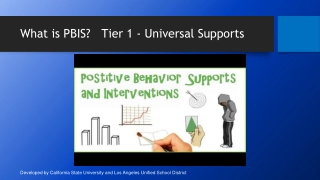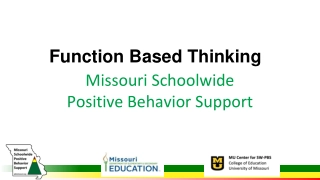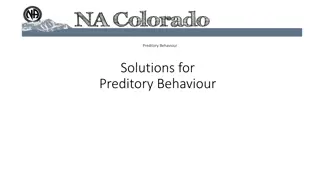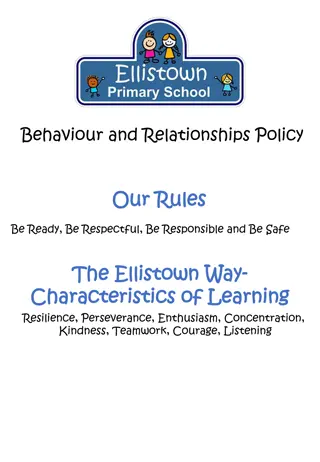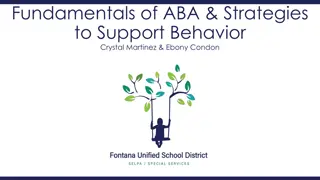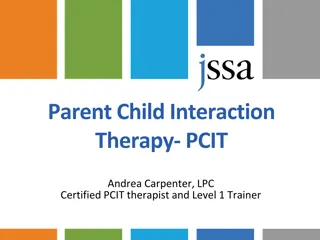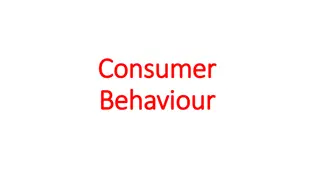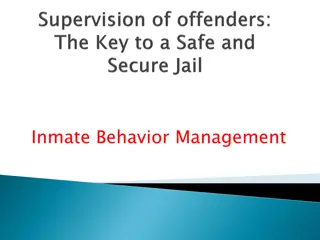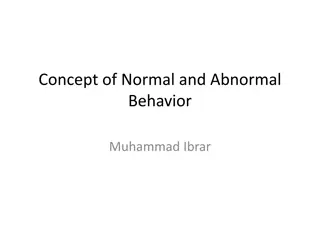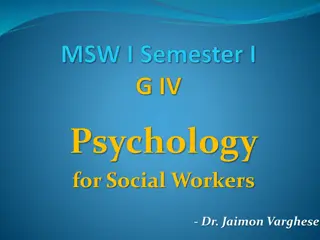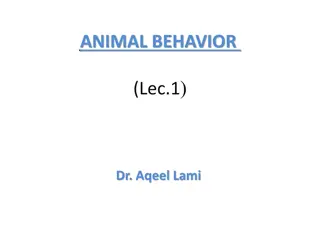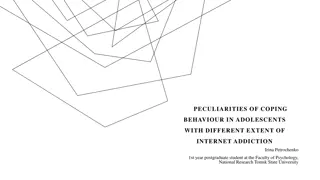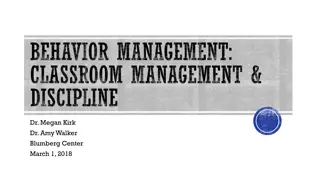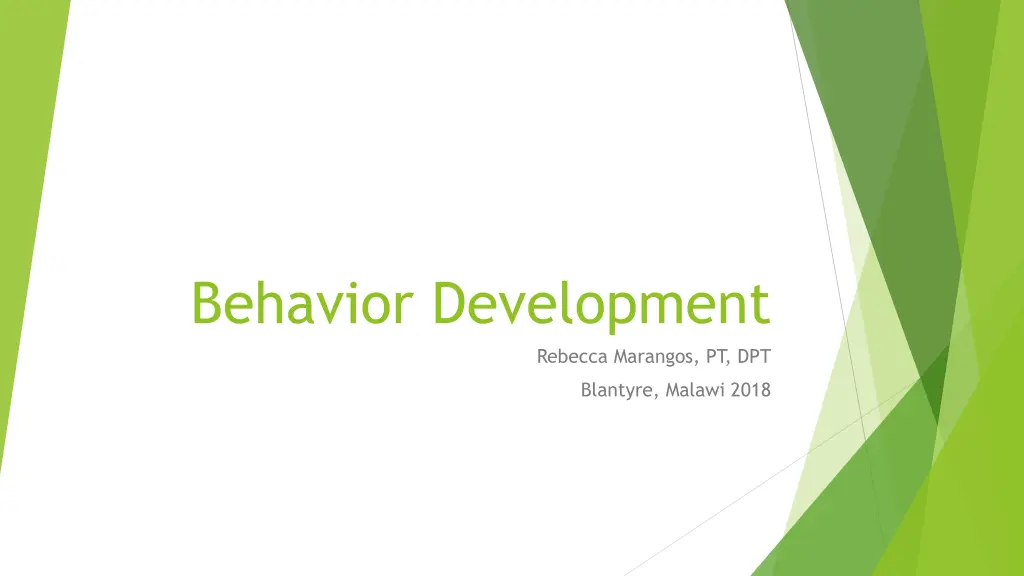
Understanding Toddler Behavior Development and Strategies for Positive Interactions
Explore typical behavior development stages from birth to 7 years old, reasons for negative behaviors in children, and effective strategies for addressing challenging behaviors in toddlers. Learn how reciprocal interactions with caregivers and a stable environment contribute to positive social-emotional development.
Uploaded on | 1 Views
Download Presentation

Please find below an Image/Link to download the presentation.
The content on the website is provided AS IS for your information and personal use only. It may not be sold, licensed, or shared on other websites without obtaining consent from the author. If you encounter any issues during the download, it is possible that the publisher has removed the file from their server.
You are allowed to download the files provided on this website for personal or commercial use, subject to the condition that they are used lawfully. All files are the property of their respective owners.
The content on the website is provided AS IS for your information and personal use only. It may not be sold, licensed, or shared on other websites without obtaining consent from the author.
E N D
Presentation Transcript
Behavior Development Rebecca Marangos, PT, DPT Blantyre, Malawi 2018
Objectives Describe the reasons a child may demonstrate a negative behavior Name three strategies to address toddler behaviors Describe typical behavior development from birth to 7 years old
Interactions Children develop through reciprocal interactions with parents, caregivers and their environment Behaviors are shaped through these interactions Children with responsive caregivers and stable, consistent environments are better able to navigate their worlds Stability and consistency then contributes to positive social emotional development
Behavior Take a moment to think about a behavior you have seen a child engage in that may be frustrating What is it?
Behavior Behavior is often defined as: Observable actions that we carry out in response to stimuli Toddlers will often engage in challenging behaviors such as: Hitting Throwing Biting Tantruming Toddlers go through phases of testing the limits
Behavior Some behaviors are typical and developmentally appropriate Problem Behaviors Toddlers are learning about what and how much they can control Reinforcement
Behavior Toddlers engage in challenging behaviors for a variety of reasons Difficulty communicating/lack of language Dealing with frustration and big emotions Difficulty coping with their environment Sensory difficulties To obtain something or- to escape from something
Control Typical power struggles occur during Eating Sleeping Toileting Transitioning
Behavior 0-12 months Everything will go in the mouth If they are crying, there is need Wary of strangers and may get upset when familiar people are not close by Babies will stare
Behavior 1-2 years More interactive No understanding of intentionality Curiosity wins Pull things down/apart Throwing Not able to share; parallel play Beginning to understand possession and developing a strong sense of self Tantrums
Behavior 3 years Independence Control Frustration May stutter or stammer May develop fears and phobias May confuse real and make believe Will begin to play cooperatively with peers but still has difficulty sharing
Behavior 4 years Critical Begin to understand the power of words Competitive Frontal lobe development May lie, tell extravagant stories, have imaginary friends Sense of self and independence continue to build Enjoy playing with peers
Behavior 5 years Rules Empathy Fears Failure, criticism Spooky things Attention span increases Begins to understand jokes Make their own decisions around dressing and eating
Behavior 6 years Know-it-all Tantrums Seek praise Seek to master new skills
Behavior 7 years Complaining Misunderstood Dramatic Empathy
Strategies Positive re-direction Modeling appropriate behaviors and language to use Clear/concise limits and boundaries Offer up choices/alternatives Distraction pick your battles! Sensory input (squeezes, stomping, deep breaths) Provide specific praise for appropriate behavior
Strategies Affirmative directions You can do ____________ or ______________ Transition warnings Take a break/quiet corner Ignore negative behaviors (when possible) Label & validate emotions Teach an emotional vocabulary Feelings chart
Bibliography https://www.cdc.gov/ncbddd/childdevelopment/index.html https://www.heysigmund.com/developmental-stage/

